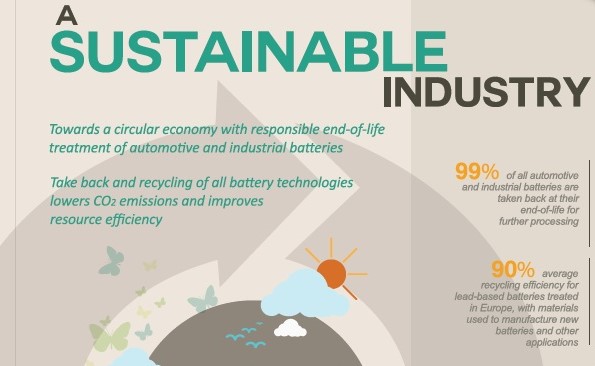(Right) indicators needed on sustainable batteries

EUROBAT welcomes the work of the European Commission on sustainability of batteries in the framework of the European Battery Alliance. Producing green, sustainable batteries in Europe is fundamental to fight climate change and ensure a just transition towards a decarbonized society offering jobs and growth for all Europeans. We believe that Europe needs a coherent legislative framework to promote battery production and ensure that the batteries sold in Europe comply with high environmental and societal standards. Eco-design can be a powerful tool in this sense, but only if well designed and in connection with other policy instruments.
Key priorities
Legislative coherence to ensure business certainty
The coherence of different policy instruments shall be a founding stone for the European industrial strategy on batteries, avoiding any overlap and ensuring business certainty, fundamental to maximize private investments in this field. For instance, the key policy instrument dealing with end-of-life[1] of batteries must remain the Battery Directive, to avoid overlaps with other tools, respecting the principle of better regulation.
Scope of the eco-design regulation: focus on electric vehicles
Batteries are used in a variety of sectors, from SLI batteries to e-mobility, from energy storage to motive applications and telecommunications. Performance requirements are extremely different from one application to the other, and this is the reason why there is no one-size-fits-all among batteries, different designs and chemistries are needed to address the needs of different customers. For instance, energy density is a key feature of batteries for passenger electric vehicles, while it is not so relevant in the case of stationary storage. We therefore believe that the scope of the eco-design regulation should be limited to on-road electric vehicles.
Recyclability of batteries
The Circular Economy principle mandates to close the loop of resources, and recycle key materials as much as possible. We are looking forward to the upcoming proposal of the European Commission on the Battery Directive, the key legislative instrument on battery end-of-life, and we remark how the recyclability of different batteries shall be considered among the key indicators for sustainable batteries.
CO2 equivalent content
The predominant CO2 equivalent footprint of batteries takes place during production. We therefore believe that any instrument missing the CO2 eq. content of the battery is a very limited instrument. We strongly believe that the CO2 eq. content shall be taken into account in the framework of the current discussion on battery sustainability.
Durability, dismantlability and other design criteria
Durability and design for second life are often mentioned among possible sustainability requirements for second life. Recommendations on design and dismantlability could favor second life applications, but we must make sure that they do not result in undue costs for manufacturers and they do not restrict the ability to innovate: the EV battery market is still in its infancy, and it is too soon to impose design requirement. Besides, according to the draft preparatory study on eco-design, the volume of EV batteries available for second life in 2030 will outset the demand of energy storage applications by a factor of ten[2]. For these reasons, we call the Commission to adopt a very cautious approach on durability, dismantlability and other design criteria, to avoid the creation of burdens to the industry without real benefits to the environment and to customers.
Critical raw materials and socio-economic considerations
Batteries manufactured with materials sourced from ethically responsible producers, respecting labour requirements and in accordance with the principle of corporate social responsibility, shall be rewarded and promoted. This involves both the environmental conditions of the mines and the social conditions of workers. Possible tools to consider these key aspects include for instance the development of rules on corporate social responsibility and the need to respect the Fundamental ILO Conventions on Labour Conditions.
In conclusion, we believe that any instrument(s) addressing the sustainability of batteries must include indicators for CO2 equivalent content, recyclability and socio-economic considerations (CSR, ethically responsible producers and labour requirements). This instrument, or variety of instruments, will have to be developed coherently with the existing policy framework on batteries, including for instance the Battery Directive.
[1] EPR, collection and recycling.
[2] Second life is anyway not a replacement of recycling, but only a postponement.